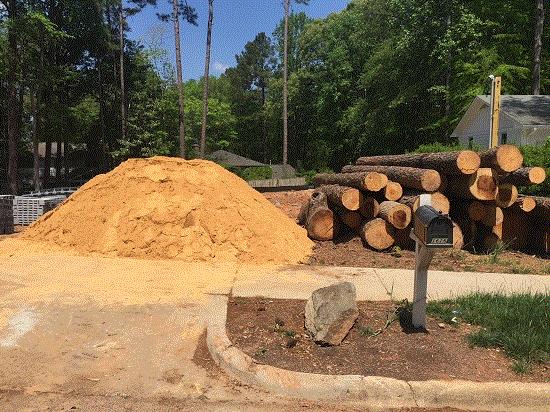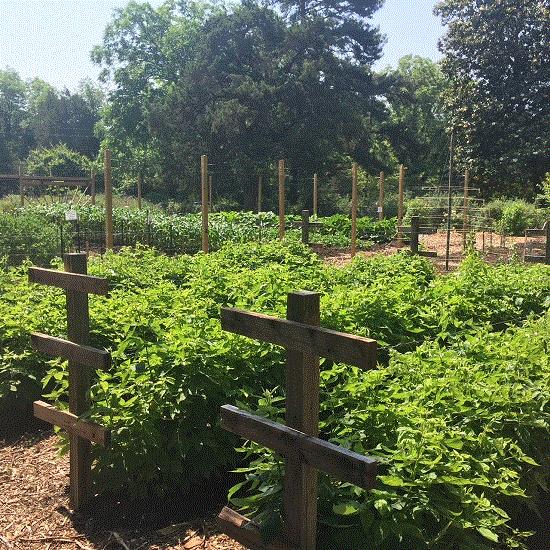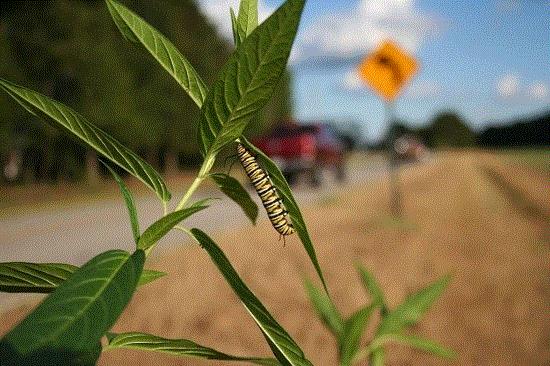Non-natives fine for some native birds
Don’t brush off all manmade ecosystems as bad. Human-altered ecosystems can offer some native birds benefits, according to a study by U.S. and Australian researchers published in the journal Ecosphere.
The authors rationalize that since novel ecosystems cover about twice the land area of wildlands, we need to understand their value. The results will be useful for helping to parse how to steer funding resources in developing or restoring habitat and inform models to that effect.
Authors warn: Do not interpret their results negatively to think that habitat restoration to historic conditions is futile. There’s a lot of complexity. Some bird species are more sensitive than others to novel ecosystems.
"Prior to our study, the usefulness of novel ecosystems for native wildlife was a concept. Now we have empirical support," said Pat Kennedy, Oregon State University. "Our data suggest that controlling non-native plants may not yield important benefits for some nesting birds, yet we are spending a lot of time and money attempting to restore these ecosystems. We need to start thinking more critically about restoration priorities."
The study compared the populations and behaviors of birds in Zumwalt Prairie in northeastern Oregon with birds in human-designed public gardens in Perth, Australia. The Zumwalt Prairie is a native-grassland-plants-dominated ecosystem, but non-native plants are present and available for use as breeding sites.
Studying ground-nesting birds, Pat determined the majority of the species nesting in the prairie were successful in native and non-native vegetation. The savannah sparrow seemed to be affected by the presence of non-native plants.
Areas like Zumwalt Prairie are often “described erroneously as 'degraded,'” she said. It’s not possible to restore most of them to the historic conditions of 250 years ago. “Although often, these non-restorable sites can provide suitable habitat for novel ecosystem utilizers. The non-native plants likely provide resources for these birds or do not get in their way."
In Perth, Murdoch University researchers found only one group of bird species—nectarivores—that were sensitive to the presence of non-native plants in urban gardens. The majority of the native garden birds were novel ecosystem utilizers. Note that the city of Perth has a population of about 2 million and sits in a biodiversity hot spot. Front yards of the gardens were studied. The authors noted that native Banksia forest was cleared for development. While the Banksia ecosystem is highly threatened, most of the gardens were in close proximity to remnant Banksia woodlands.
"While our gardens don't work for every bird species that used to roam the Perth metro area before European settlement, our study has highlighted they can play an important role in supporting urban biodiversity," said Joe Fontaine, Murdoch University.
—from Novel ecosystems provide use for some native birds by Chris Branam for Oregon State University Extension Service
There’s a recently released peer-reviewed Washington State University Extension publication geared to Northwestern gardeners, “ARE NATIVE TREES AND SHRUBS BETTER CHOICES FOR WILDLIFE IN HOME LANDSCAPES?,” by Dr. Linda Chalker-Scott that may be beneficial for some NewTerrain readers.
Do novel ecosystems provide habitat value for wildlife? Revisiting the physiognomy vs. floristics debate by Patricia L. Kennedy et al. in Ecosphere (open access).
__________________________________________________________________

Yearly, U.S. cities lose 175,000 acres of tree cover

Thirty six million—that’s the number of trees being lost across U.S. metropolitan areas each year, equaling 175,000 acres of canopy cover. That’s an area the size of Delaware every every years. The comparison of Google Earth views showed that from 2009-2014, urban tree cover dropped 1% from 40.4% to 39.4%. At the same time, impervious surfaces in U.S. urban areas rose 1% from 25.6% to 26.6%.
The great irony is that while cities lose trees, the evidence base for the benefits of trees to human health and the environment keeps growing.
Cities in Rhode Island, Georgia, Alabama, Nebraska and the District of Columbia experienced the greatest canopy loss 2009 to 2014. Three states—Mississippi, Montana and New Mexico—experienced insignificant urban tree gains.
Also see: U.S. Cities Lose Tree Cover Just When They Need It Most by Richard Conniff in Scientific American.
Declining urban and community tree cover in the United States by David Nowak and Eric Greenfield in Urban Forestry & Urban Greening.
__________________________________________________________________________________________

Which trees will handle California’s climate change?
It’s a hard question that needs to be informed by evidence: Which trees will provide urban areas ecosystems services in the long run? Especially for places like California where cities can expect to see higher temperatures and less rainfall.
There’s an effort underway to gain insights. A statewide group from the University of California Cooperative Extension teamed with the U.S. Forest Service (USFS) for two years into a 20-year study of how trees planted in Southern California hold up to the long-term, chronic stress experienced due to climate change.
The UC Extension team includes: Janet Hartin, San Bernardino County; Darren Haver, Orange County; and Jim Downer, Ventura County. They're working with Alison Berry, UC Davis; and Greg McPherson and Natalie van Doorn from USFS.
Trees targeted for the study are drought-tolerant, pest-resistant, under-utilized and produce low leaf litter, among other characteristics. Twelve species are being compared in each climate zone, including U.S. and California natives, as well as introduced species.
First results should be available by the end of 2019, when three years of data on tree health and growth will be available.
Also see UC study seeks street trees that can cope with climate change by Jeannette E. Warnert.
___________________________________________________________________

Urban ag & CO2

There are a lot of reasons to grow food in cities, but reducing carbon emissions isn’t one of them. A study published in Environmental Science & Technology found that increasing urban agriculture to take up half of the vacant land in cities would reduce food-related emissions by only 1%. There are a number of other more effective ways to reduce carbon emissions related to food consumption and food waste, the scientists say.
According to previous studies, feeding urban populations—from producing food to transporting it, to refrigeration and cooking meals, and finally to tossing leftovers — accounts for 20% to 30% of global greenhouse gas emissions. Conversations around this idea have focused primarily on the agricultural production side of the equation. But Eugene Mohareb from the University of Cambridge wanted to see what would happen if they reframed the issue from the urban consumption standpoint.
Building off of a review of diet-related emissions conducted by one of the members of the team, the researchers pooled data from a variety of sources to estimate emissions related to different components of the U.S. food system, including transportation, processing and waste disposal methods. They then estimated how changes in specific urban consumption practices could reduce these emissions.
Interestingly, they found that increasing urban agriculture to occupy half of the vacant land in cities to meet 17% of U.S. produce demand would reduce food-related emissions by only 1%. But switching from fossil fuel-based electricity to carbon-free energy sources would slash food-related emissions by at least 18%; reducing retail and consumer food waste by half would decrease emissions by 11%; and replacing a quarter of total beef consumption with chicken would drop emissions by 6%.
—Excerpted primarily from Changing cities’ food systems to help reduce carbon emissions by the American Chemical Society
The Role of Cities in Mitigating US Food System Greenhouse Gas Emissions by Eugene A. Mohareb, Martin C. Heller and Peter M. Guthrie in Environmental Science & Technology (open access).
________________________________________________________________________________________

Can highways give Monarchs road rage?

Photo: Andrew Davis, UGA.
We know that pollinator habitat on highways has pluses and minuses. And now, based on work at the University of Georgia, it looks like road noise stresses out Monarch caterpillars. Not only that, but it might also make them aggressive.
Monarch caterpillars experience the same kind of stress response as humans, with a 16% to 17% increase in “heart rate” when they're exposed to road noise. In the case of a Monarch caterpillar, its heart is a long tube running along its back.
Researchers found that Monarch caterpillars exposed to highway noise under lab conditions had elevated heart rates, a sign that they were experiencing stress. Not only that, but those caterpillars exposed to road noise were more aggressive with other Monarch caterpillars, even biting researchers conducting the study.
With roadsides increasingly promoted as sites for pollinator habitat, the findings could have implications for Monarch butterfly conservation.
The work was performed by Andy Davis, a research scientist in the University of Georgia Odum School of Ecology, who specializes in conservation physiology, a new and developing field that examines how the physiology of animals is affected by their environments and how that knowledge can inform management decisions, especially for species of conservation concern.
Effects of simulated highway noise on heart rates of larval monarch butterflies, Danaus plexippus: implications for roadside habitat suitability by Andrew K. Davis, Hayley Schroeder, Ian Yeager and Jana Pearce in Biology Letters.
__________________________________________________________________

PPA 36th national symposium in Raleigh

Immerse yourself in the world of perennial plants at the Perennial Plant Association’s (PPA) yearly national symposium to be held in Raleigh, North Carolina, from July 30 through August 3. Now in its 36th year, this industry-focused conference brings together more than 500 professionals for networking, learning and special events. Attendees can explore outstanding local gardens, visit one-of-a-kind retail garden centers and tour innovative production facilities. You’ll also hear and engage with industry experts from around the world.
A number of seminars cover functional plants/landscapes:
-
George Coombs, Mt. Cuba Center, on Mt. Cuba’s native plant evaluation program
-
Ann English, Montgomery County (MD) Rainscapes Program, on plants for green infrastructure
-
Kate Pearce, Senior Planner for the City of Raleigh, on plans for Raleigh’s Dorothea Dix Park
-
Patrick McMillan, South Carolina Botanical Garden, on perennials for coping with drought and Carolina natives
-
Ron Gagliardo, Manager of Horticultural Services for Amazon, on Amazon’s innovative Spheres
-
Anne Spafford, NC State University, on pollinator plants
-
Richard Hartlage, Land Morphology, on green trends in landscape architecture
I'm registered and look forward to a week dweebing out.
____________________________________________________________________
Become a Chesapeake Landscape Professional this summer
Registration is open for 2018 Chesapeake Bay Landscape Professional (CBLP) certification. CBLP is a new voluntary, regional credential for professionals who design, install and maintain sustainable landscapes in the Chesapeake Bay watershed.
CBLP’s active learning program engages participants to develop critical thinking, problem solving and collaborative practice skills.
Two levels of training and certification are offered:
-
Level 1 is a baseline certification in design, installation and maintenance of sustainable landscapes, emphasizing proper maintenance of stormwater best management practices (BMPs)
-
Level 2 is an advanced credential in design or installation, focusing on stormwater BMPs
Level 1 consists of one two-day class that combines classroom learning about conservation landscaping (native plants, natural communities, habitat, soils, invasives management) and stormwater BMPs, with a field-based maintenance practicum. The class also covers BMP inspection and verification protocols. Level 1 candidates are required to pass a written examination after the class.
Several classes are planned for summer 2018:
-
June 18-19, Annapolis, Maryland
-
July 9-10, Charlottesville, Virginia
-
July 30-31, State College, Pennsylvani
The next Level 2 Intensive Seminar will be held June 21-23, 2018.
CBLP Candidates receive unlimited access to CBLP’s online webinar series on sustainable landscaping topics and a copy of CBLP’s sustainable landscape maintenance manual. Additional resources are available via free download or purchase.
A searchable, online directory of CBLP-certified landscape professionals is available. For more information, visit or contact Beth Ginter, CBLP Coordinator, at beth@cblpro.org
__________________________________________________________________
ASLA goes to Philly in October

Registration for The American Society of Landscape Architects 2018 ASLA Annual Meeting and EXPO is now open. The event will take place October 19-22 in Philadelphia at the Pennsylvania Convention Center.
Philly will be a great location for the more than 6,000 landscape architecture professionals and students who go to network, share ideas and explore the city’s changing landscapes.
_____________________________________________________________________
Making natives your new norm

The Florida Association of Native Nurseries (FANN) is planning their annual native plant show on October 18-19 in Bradenton. This year's theme is "Making native plants your new norm."
FANN is focused on educational offerings and displays to inspire and help get more natives in the landscape. FANN is expanding the education program to include more courses for industry professionals, and by popular demand, special separate classes designed for private property owners and gardeners.
____________________________________________________________________
Reader comment
“Thank you for sharing the article about the introduction of the sterile lantana. I hope the University of Florida is also investing resources in developing garden-ready native lantanas for distribution. The native Florida lantana has been pushed to the brink of extinction by the introduction of the non-native version, yet the two are so similar that it can be close to impossible to tell them apart. Why not develop the native one for reintroduction? Likewise, the Texas lantana is very similar to the West Indies variety, but bigger and considered 'deer proof.' Let's spend the time and energy cultivating our native lantana, giving gardeners a chance to ‘plant well’ instead of ‘avoiding planting bad.’”
—Katie Rose
____________________________________________________________________
Worth reading
Best,

Debbie Hamrick
NewTerrain
This email was received by 18,784 readers.
If you're interested in advertising in NewTerrain, contact Kim Brown.